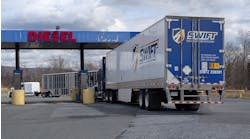If you haven’t at least considered the possibility of switching to 6x2 axles, now is a good time to take a look.
Our recently updated Confidence Report confirms the 2.5% fuel economy savings we first predicted in our 2014 Confidence Report on 6x2s.
Earlier versions of 6x2s had some issues that have now been addressed in Generation II and III. The first generation of 6x2 had no load-shifting technology and relied on manual differential locks. Generation II features manual or automatic load shifting, traction control, and adjusted engine parameters to limit low speed/brake torque. Generation III 6x2s have liftable pusher axles, automatic load sensing/load shifting, traction control and engine parameters to limit low speed/brake torque.
Fleets that are making the investment in 6x2s are seeing fuel economy gains and are also seeing some improvement in tire wear over previous generations of 6x2s. While tire wear with 6x2 axles is still an issue, there are now ways to lessen wear. Proper tire selection is a crucial piece to successful implementation and the Confidence Report provides specific recommendations in this area.
One of the findings of our updated Confidence Report is that you need to take a system-wide approach when switching to 6x2s. Communicating with drivers and driver training are critical elements in the successfully switch to 6x2s. Many fleets are doing just that and very happy with their 6x2 results.
And there is reason to be optimistic about the future of 6x2 axles because of beset practices and the adoption of complementary technologies.
While 6x2 systems offer an undeniable fuel consumption improvement, they are still not widely viewed as a net positive by the majority of the line-haul industry. However, we think fleets should gain knowledge of 6x2 tag axle systems and test not only the technology but also their internal processes for managing engine parameters and driver communication and training because real fuel savings are possible with these systems.



